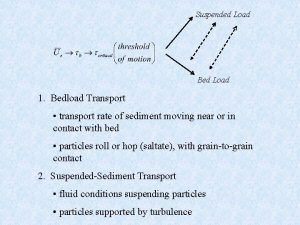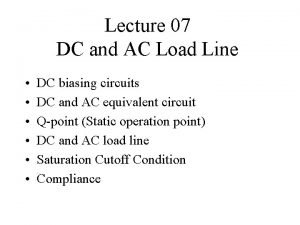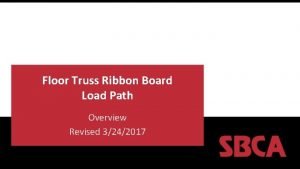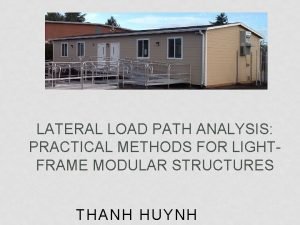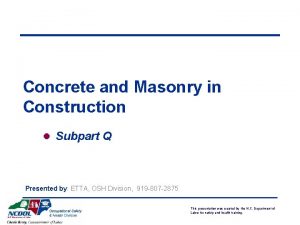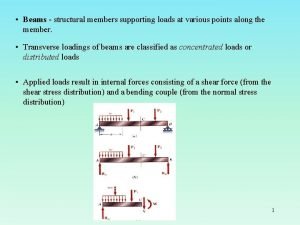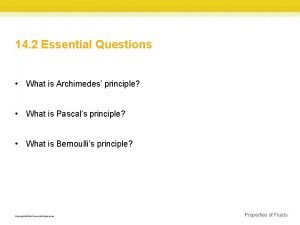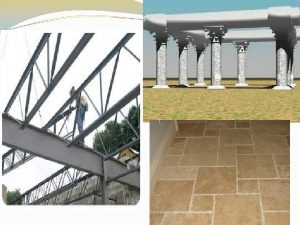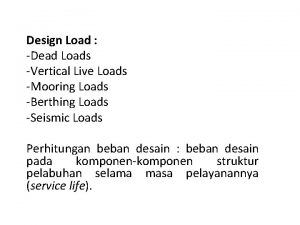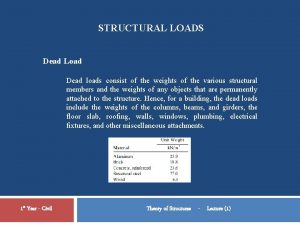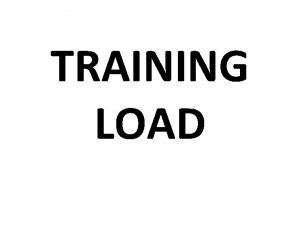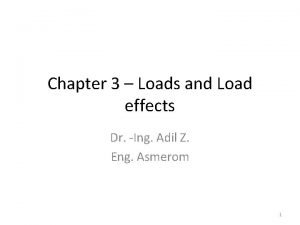Loads and Load Path Design Loads The load



















- Slides: 19

Loads and Load Path Design Loads • The load that is assumed for the design of a structure • May include one or more of the following: − Dead Load − Live Load − Snow and Ice Load − Rain Load −Flood Load − Wind Load − Earthquake Load − Earth Pressure Load

Design Loads Dead Loads (DL) – fixed loads −The weight of the building components −The weight of fixed service equipment −Only known load

Design Loads Live Loads (LL) – transient and moving loads −Loads produced by the use and occupancy of a building −Live load may be variable during a structure’s lifetime −Specified in building codes ©i. Stockphoto. com

Design Loads Snow Load – Force of accumulated snow on a roof – Specified in building codes – Depends on • • Location Exposure to wind Importance of building Roof slope ©i. Stockphoto. com

Design Loads Lateral Loads – Wind Loads – Earthquake Loads – Flood Loads – Earth Pressure Loads

Load Types Uniformly Distributed Load Concentrated Load

Load Path • The path that a load travels through the structural system • “Tracing” or “chasing” the loads • Each structural element must be designed for all loads that pass through it HVAC

Load Path Every load applied to the building will travel through the structural system until it is transferred to the supporting soil. APPLIED LOAD

Girder Beam Footing Column

Beam Design Area Girder Partial 2 nd FLOOR FRAMING PLAN Girder

Tributary Area Beam B. 3 3’- 4” Half the distance to each adjacent beam 6’-8” Tributary Width Tributary Area = Structural member in the framing system carries a certain area of the load Tributary Area = Beam Span (length) x Tributary Width

Beam B. 3 6'-8'' Tributary Width Tributary Area = Beam Span (length) x Tributary Width Tributary Area = (18 ft) ∙ (6. 67 ft) = 120 ft 2

Beam B. 3 6'-8'' Tributary Width Beam Uniform Load = Floor Loading (psf) x Tributary Width (ft)

Calculating Beam Loading Assume that the floor system must support its own weight of 40 psf (dead load) and a live load of 100 psf. What is the uniform load applied to the beam? Total Floor Load = 40 + 100 = 140 psf Uniform Load = Floor Load ∙ Tributary Width

Calculating Girder Loading Exterior Girder Beam DESIGN AREA Interior Girder Partial 2 nd FLOOR FRAMING PLAN

Calculating Column Loads Beam Girder

Calculating Column Loads Tributary Area = (18 ft)(20 ft) = 360 ft 2

Calculating Column Loads Assume that the floor system must support its own weight of 40 psf (dead load) and a live load of 100 psf. What is the column load for column B 3? Total Floor Load = 40 + 100 = 140 psf Column Load = Tributary Area ∙ Total Floor Load

Partial Roof FLOOR FRAMING PLAN
 Red dot
Red dot Thrust load bearing
Thrust load bearing Bed load and suspended load transport
Bed load and suspended load transport Dc load line
Dc load line Hot path cold path
Hot path cold path Ribbon boards construction
Ribbon boards construction Lateral load path
Lateral load path Sensible loads in radiant cooling
Sensible loads in radiant cooling Positive fail safe joint connectors to prevent separation
Positive fail safe joint connectors to prevent separation Handles on these must not extend beyond
Handles on these must not extend beyond Dutchman fire hose
Dutchman fire hose Sana altaf
Sana altaf The pipe assembly supports the vertical loads shown
The pipe assembly supports the vertical loads shown The structural members supporting loads at various points.
The structural members supporting loads at various points. Archimedes principle
Archimedes principle The limited access zone of a masonry wall must be
The limited access zone of a masonry wall must be Pneumatic shock absorber design
Pneumatic shock absorber design Uniform workstation loads
Uniform workstation loads Static structural analysis in ansys workbench
Static structural analysis in ansys workbench Members used to carry wall loads over wall openings
Members used to carry wall loads over wall openings


